
Fueling Child Growth With Nutrient Rich Foods
Healthy food for kids is essential to support a child's growth and learning. But for some parents, this can be a challenge. Some kids can be a picky eater, and this can frustrate parents to an extent. You worry that your kids might not be eating enough or that they prefer munching on ice cream and sweets rather than the food you are giving them. Poor nutrition can cause long-term health implications and impact brain development.1,2-5. In fact, studies show that the most common cause of slow growth in children is an inadequate intake of energy, protein, and micronutrients1.
On a brighter note, there are numerous ways to navigate the challenges of introducing healthy food for kids and create a positive mealtime experience for both you and your child! Parents play a vital role in fostering healthy eating habits. By involving your children in meal planning and modeling healthy eating habits yourself, you can encourage them to explore a wider variety of nutritious choices.
Let’s take a look at some of the healthy food for kids that you can incorporate into your child’s meal to make meal time more enjoyable!
Healthy food for kids with the most nutrition
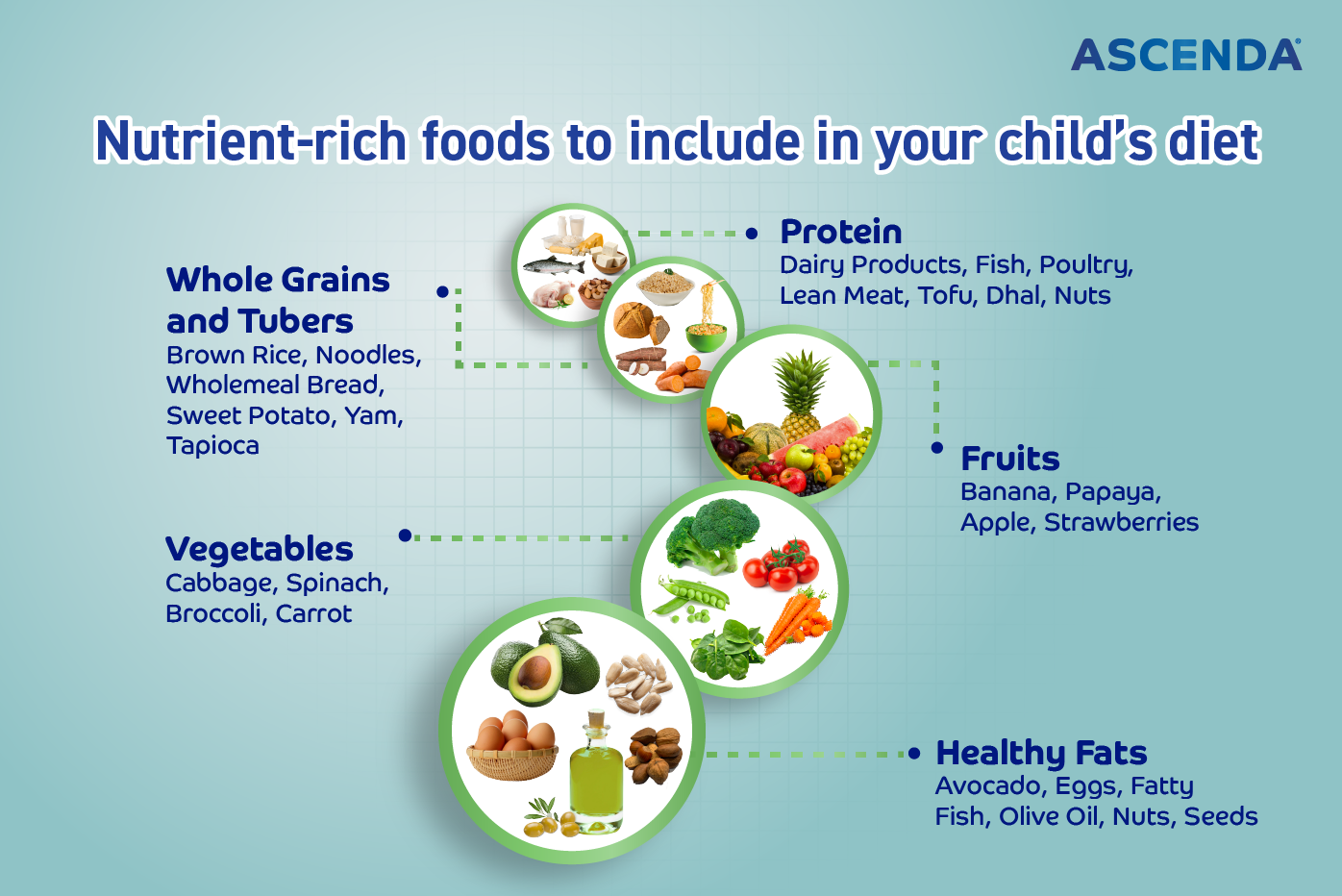
#1. Protein-rich foods
Protein is one of the most important nutrients that our bodies require in order to function. It plays a crucial role in supporting a healthy child’s growth by building, maintaining, and repairing body tissues as well as strengthening their immune system. The good news is that these essential nutrients are readily available in numerous healthy foods for kids! You can easily introduce your children to a variety of options for food rich with protein to ensure they meet their daily needs. Some of the examples are:
- Eggs: Breakfast and snack staples packed with complete protein.
- Dairy: Types of dairy products like plain yogurt, cheese, and fortified milk offer protein and calcium.
- Lean protein: Opt for chicken, turkey, or fish for protein with less fat.
- Oily fish: Include tuna, mackerel, or tenggiri for protein and essential fat such as omega-3s.
- Legumes: Try chickpeas, beans, tempeh, and tofu for plant-based protein and fiber.
- Soy milk: A good lactose-free alternative offering protein and calcium.
- Nuts & seeds: Almonds, walnuts, and sunflower seeds are protein-packed snacks. Remember to supervise young children in the case of choking hazards.
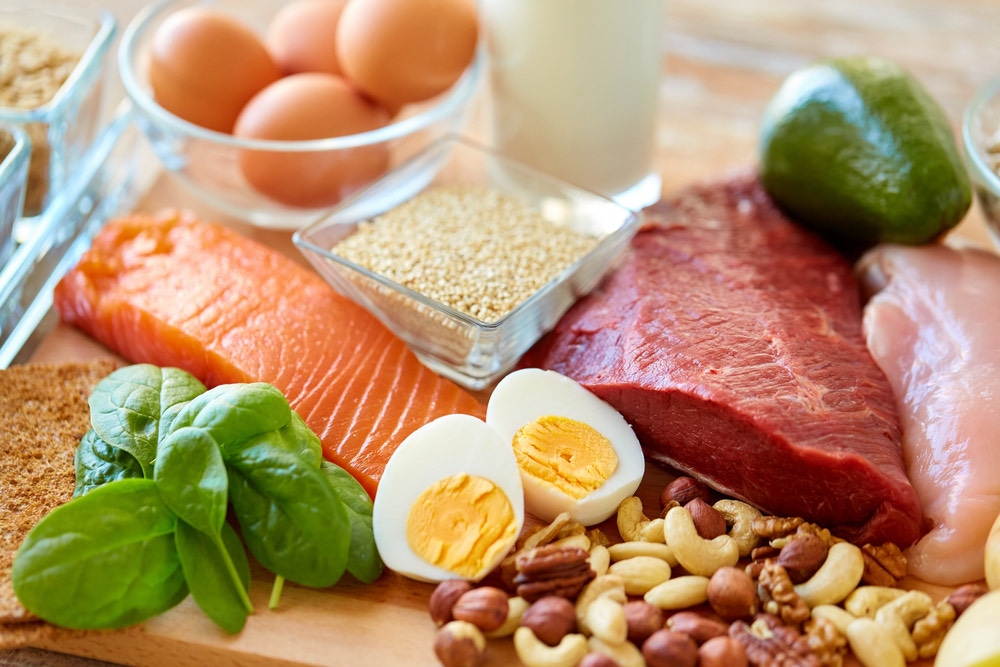
#2. Whole grains and tubers
Don't let healthy food lists for kids overwhelm you! Explore a variety of whole grains and tubers such as wheat, brown rice, sweet potatoes and corn to fuel your child's growth and development. Whole grains and tubers are packed with carbohydrates, giving your child the energy they need to fuel their growth, development, and learning adventures! Plus, they are also packed with fibre which is a key ingredient to prevent constipation in children and promote a healthy digestive system.
Need some recipe inspiration? Get creative and incorporate these nutritious powerhouses into your child's daily meals from brown rice breakfast bowls to sweet potato fries with a veggie dip!
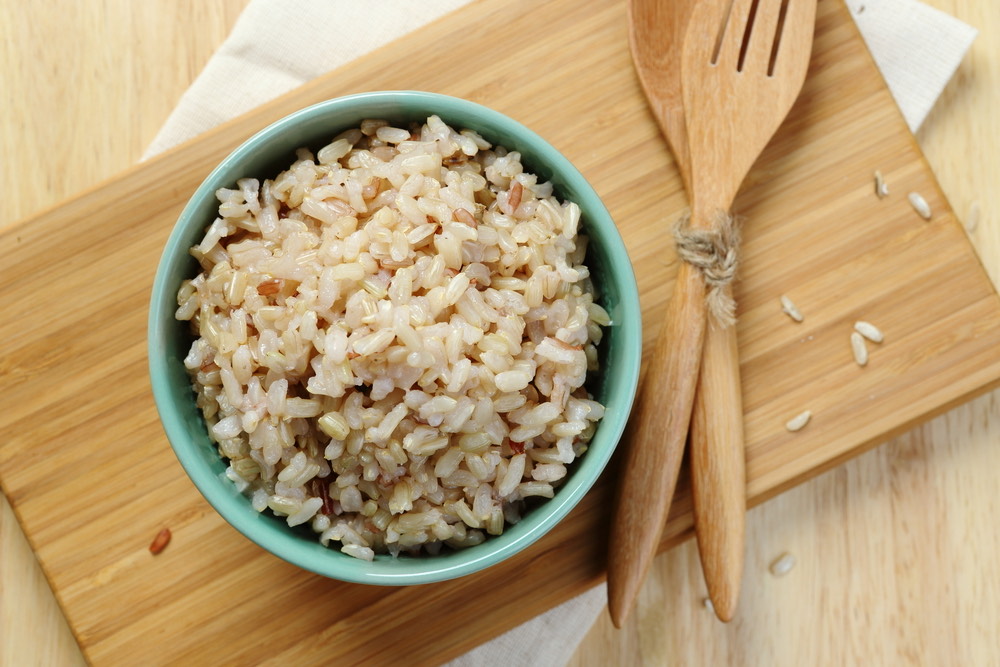
#3. Fruits and vegetables
Fruits and vegetables might not always be the most popular choice, but don't underestimate their power as a healthy food for kids! They are packed with essential nutrients like vitamins, minerals, and antioxidants, which are crucial for supporting healthy growth and a strong immune system in children.
Take vegetables for instance! Leafy green vegetables are a great source of folate, a vital nutrient for brain development and function in children. Fruits like berries are packed with Vitamin C and antioxidants, while avocados bring fiber, healthy fats, and other important nutrients to the table. While fruits and vegetables are primarily recognised for their abundance of vitamins and fiber, they can also offer a complementary contribution to daily iron and zinc intake. Although they may not be the most concentrated sources of these minerals, they nonetheless play a valuable role in a balanced diet. For instance, certain vegetables like leafy greens and potatoes, along with meats, fish, or chicken can contribute to daily iron intake.
For healthy foods for kids packed with good sources of iron and zinc, consider incorporating the following
- Eggs: These breakfast champions are packed with iron and zinc!
- Soybeans: This versatile veggie is a great source of both nutrients.
- Whole Grain Oatmeal: Start the day off right with a bowl of oatmeal!
- Berries: Blueberries, blackberries, and pomegranates are delicious options filled with iron and zinc.
- Avocados: This creamy fruit isn't just tasty, it's also a good source of iron and zinc.
- Fortified Milk: Give your child an extra boost with milk fortified with iron and zinc.
Help your children to explore these healthy foods so that they can benefit from it. Fruits are great for kids, but remember: keep it balanced!
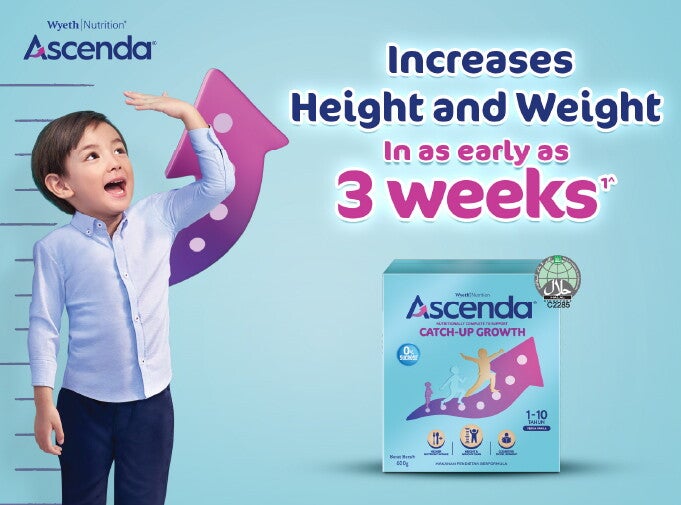
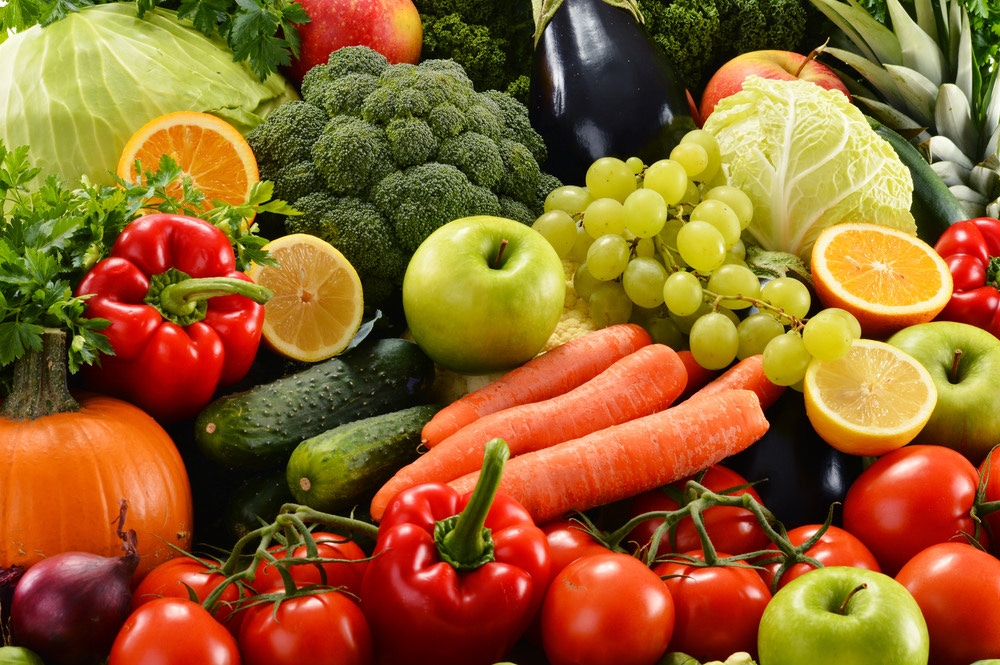
#4. Healthy fats
Growing minds and bodies need healthy fats just like a car needs oil to run! Healthy fats are part of the recommended healthy food for kids as it helps support children’s normal growth and brain development. These fats help children absorb important vitamins like A, D, E, and K, which contribute to their growth and development.
Great sources of healthy fats include:
- Avocado: Creamy and yummy, perfect on toast, salads, or smoothies.
- Olive Oil: Drizzle on veggies, pasta, or use for cooking.
- Fish like salmon and tuna: Great for brain development!
- Eggs: Protein and healthy fats in one!
- Nuts and seeds: Great snacks, but supervise young children.
- Coconut: Delicious and healthy oil or flakes for many dishes.
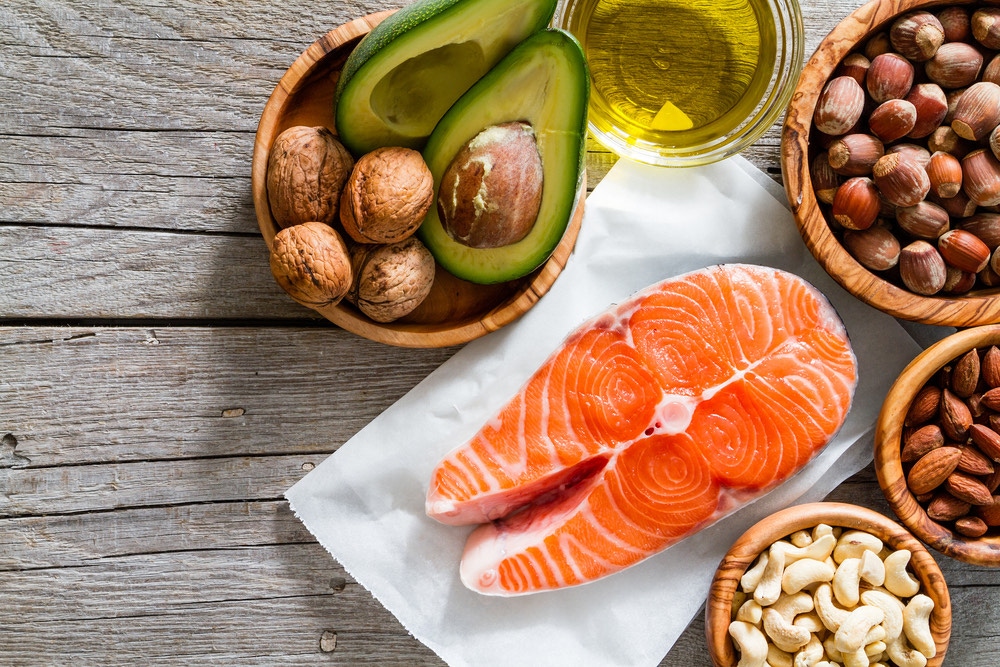
Tips to encourage your kids to eat more healthy foods
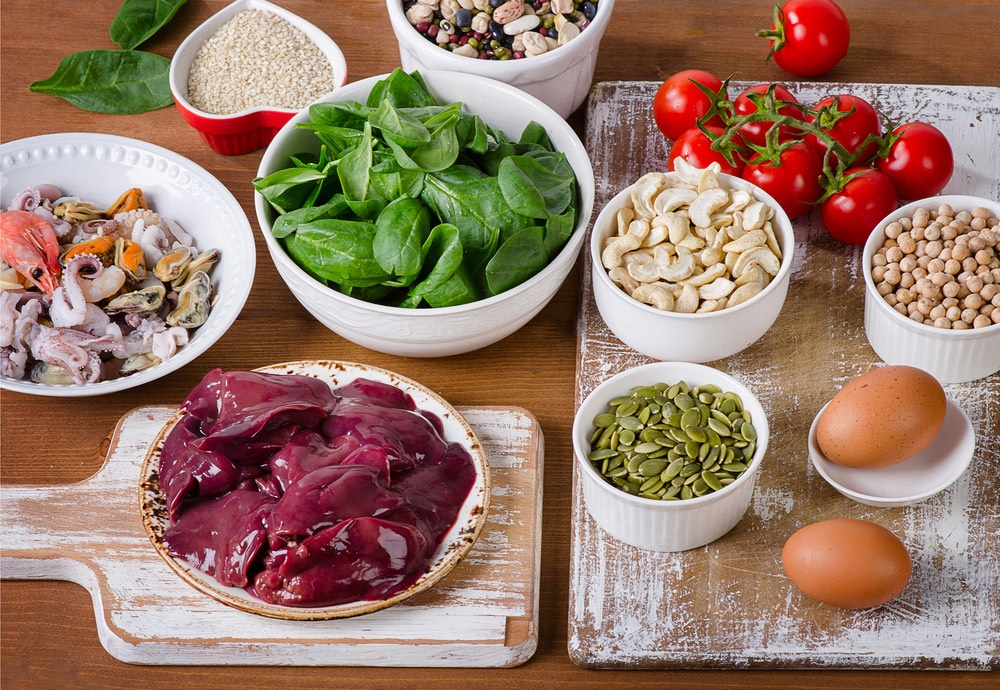
Need some tips to improve your toddler’s nutrition? Here’s how you can get your kids to eat more healthy foods:
- Use the “Quarter, Quarter, Half”(QQH) approach as a guide for a balanced diet
One quarter: Fill this with whole grains like rice, pasta, bread, cereal, or even potatoes. Another quarter: Fill it with protein sources like fish, chicken, meat, or beans and the last half: Fill it with fruits and vegetables. Some of the examples of QQH food for local dishes are brown rice with grilled fish and vegetables. - Keep your child hydrated with adequate water! Water helps to remove waste and carries important nutrients throughout their body. Avoid sweetened drinks and any drinks that are packed with sugar!
- Limit the treats that might include your child’s favourite food such as cookies, chips, ice cream or any processed food. Highly processed foods lack essential nutrients your child needs to grow and develop to their full potential
- The best way to get kids to eat healthy food are home-cooked meals. If you have not started on that yet, this is the best time to do so! This way, you get to control the ingredients and avoid hidden sugars and unhealthy fats.
- No fighting at the lunch table. Mealtimes should be positive and enjoyable and moms and dads are the perfect role model to lead by example to start eating healthy food as kids would follow suit.
Encouraging healthy eating can be challenging, especially for picky eaters or children with specific dietary needs. Consulting a doctor or registered dietitian can provide valuable guidance and support in creating a personalised plan for your child's growth and development. Alternatively, you might want to supplement their diet with a nutritionally complete formula milk6-10 so they don’t miss out on key nutrients necessary for growth and learning.
To help support your children's growth and learning journey, consider trying Ascenda today. ASCENDA is an energy and nutrient dense formula milk with 38 key nutrients that aims to support both physical and cognitive development, aiding in the increase of height and weight. Make Ascenda a part of your child's daily meals and witness their holistic growth!
References:
1 Sullivan PB, Goulet O. Growth faltering: how to catch up? Eur J Clin Nutr. 2010;64 (suppl 1):S1.
2 De Onis M, Branca F. Childhood stunting: a global perspective. Matern Child Nutr. 2016; 12:12-26.
3 Kar BR, Rao SL, Chandramouli BA. Cognitive development in children with chronic protein energy malnutrition. Behav Brain Funct. 2008;4(1):31.
4 Loveridge N, Noble BS. Control of longitudinal growth: the role of nutrition. Eur J Clin Nutr. 1994;48:75-84.
5 Prendergast AJ, Humphrey JH. The stunting syndrome in developing countries. J Paediatr Child Health. 2014;34(4):250-65.
6 Ghosh AK, Kishore B, Shaikh I, et al. Continuation of oral nutritional supplementation supports continued growth in nutritionally at-risk children with picky eating behaviour: A post-intervention, observational follow-up study. J Int Med Res. 2018;46(7):2615-32.
7 Huynh DT, Estorninos E, Capeding MR, et al. Impact of long-term use of oral nutritional supplement on nutritional adequacy, dietary diversity, food intake and growth of Filipino preschool children. J Nutr Sci. 2016;5(e20):1-11.
8 Huynh DT, Estorninos E, Capeding RZ, Oliver JS, Low YL, Rosales FJ. Longitudinal growth and health outcomes in nutritionally at-risk children who received long-term nutritional intervention. J Hum Nutr Diet. 2015;28(6):623-35.
9 Sheng X, Tong M, Zhao D, et al. Randomized controlled trial to compare growth parameters and nutrient adequacy in children with picky eating behaviors who received nutritional counseling with or without an oral nutritional supplement. Nutr Metab Insights. 2014;7:NMI-S15097.
10 Alarcon PA, Lin LH, Noche Jr M, et al. Effect of oral supplementation on catch-up growth in picky eaters. Clin Pediatr. 2003;42(3):209-17.

